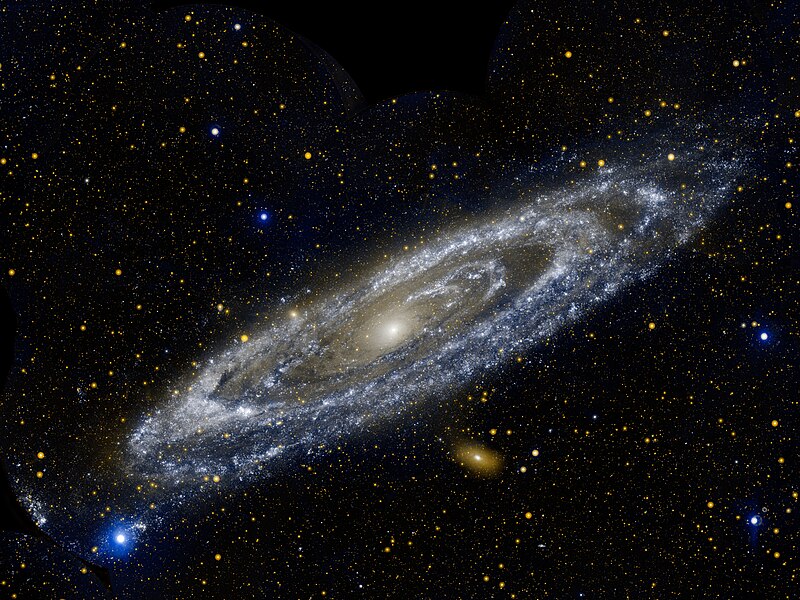Fișier:Andromeda galaxy 2.jpg

Mărimea acestei previzualizări: 800 × 600 pixeli. Alte rezoluții: 320 × 240 pixeli | 640 × 480 pixeli | 1.024 × 768 pixeli | 1.280 × 960 pixeli | 2.560 × 1.920 pixeli | 6.000 × 4.500 pixeli.
Mărește rezoluția imaginii (6.000 × 4.500 pixeli, mărime fișier: 21,44 MB, tip MIME: image/jpeg)
Istoricul fișierului
Apăsați pe Data și ora pentru a vedea versiunea trimisă atunci.
| Data și ora | Miniatură | Dimensiuni | Utilizator | Comentariu | |
|---|---|---|---|---|---|
| actuală | 21 mai 2012 13:09 |  | 6.000x4.500 (21,44 MB) | Originalwana | {{Information |Description ={{en|1=Hot stars burn brightly in this image from NASA's Galaxy Evolution Explorer, showing the ultraviolet side of a familiar face. At approximately 2.5 million light-years away, the Andromeda galaxy, or M31, is our [[:C... |
Utilizarea fișierului
Următoarele pagini conțin această imagine:
Utilizarea globală a fișierului
Următoarele alte proiecte wiki folosesc acest fișier:
- Utilizare la af.wikipedia.org
- Utilizare la an.wikipedia.org
- Utilizare la ar.wikipedia.org
- Utilizare la bg.wikipedia.org
- Utilizare la de.wikipedia.org
- Utilizare la de.wikibooks.org
- Utilizare la en.wikipedia.org
- Utilizare la eu.wikipedia.org
- Utilizare la fr.wiktionary.org
- Utilizare la hr.wikipedia.org
- Utilizare la it.wikipedia.org
- Utilizare la ja.wikipedia.org
- Utilizare la ko.wikipedia.org
- Utilizare la lb.wikipedia.org
- Utilizare la lv.wikipedia.org
- Utilizare la no.wikipedia.org
- Utilizare la pl.wiktionary.org
- Utilizare la pt.wikipedia.org
- Utilizare la scn.wikipedia.org
- Utilizare la sh.wikipedia.org
- Utilizare la simple.wikipedia.org
- Utilizare la sr.wikipedia.org
- Utilizare la sv.wikipedia.org
- Utilizare la ta.wikipedia.org


